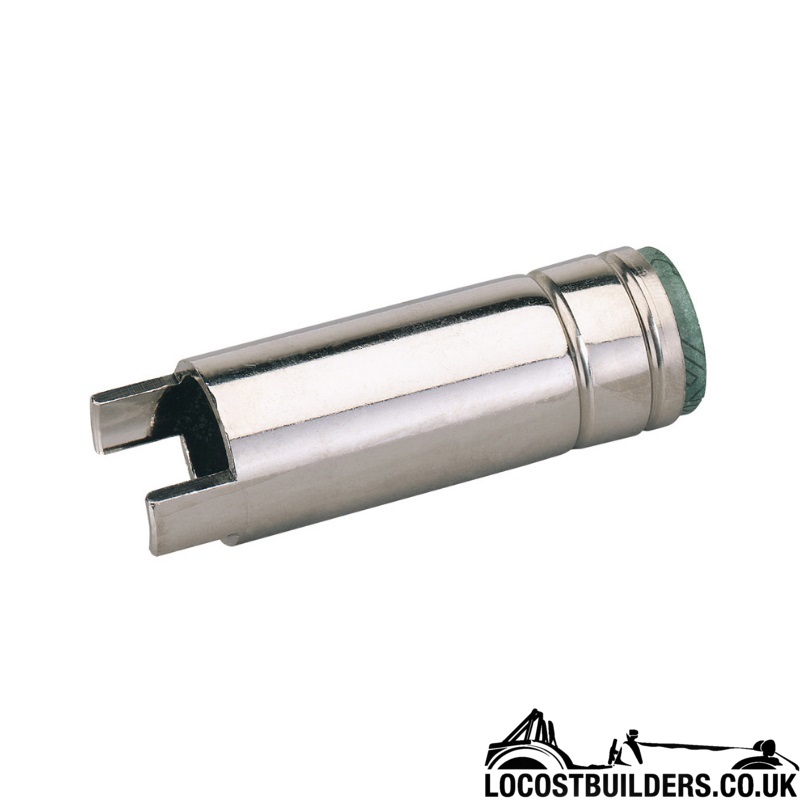David Jenkins
|
| posted on 28/6/21 at 02:03 PM |

|
|
Imitation spot welding
I have a little project coming up, and will need to do a little bit of 'spot welding'. In other words, drilling a hole, putting the other
bit of steel behind, then MIG welding through the hole. This isn't structural - it's just to hold the two together permanently, leaving
the outside smooth (after grinding).
The only problem is - I haven't done this before and have no ideal what size hole I need to drill!
What size is recommended, or what's typical?
|
|
|
|
|
nick205
|
| posted on 28/6/21 at 03:00 PM |

|
|
You can get shrouds for MIG welders to help imitate spot welds

https://www.craigmo
reonline.co.uk/draper-38453-2-x-mig-welding-torch-spot-weld-shrouds-for-draper-welders-except-stk-no-43952
|
|
|
watsonpj
|
| posted on 28/6/21 at 03:03 PM |

|
|
So basically a plug weld.
I have done this a few times and normal used 8mm but you could go lower maybe 6 just depends on your skills with a welder but it never ends up with
too much to grind.
|
|
|
nick205
|
| posted on 28/6/21 at 03:27 PM |

|
|
Drilling through sheet metal can often result in a distorted hole if you use too large a Ø drill bit (and probably too much weld as well).
Thinking of when my Dad's been restoring some cars he's hired a spot welder before for doing floor sections.
Worth speaking to a local welding supplier to see what's available?
|
|
|
coyoteboy
|
| posted on 28/6/21 at 03:34 PM |

|
|
Having drilled out a lot of spot welds recently, I drilled them out with a 5mm bit. So I suspect I'd start with a 4mm drill and plug that with a
lot of power. Any larger and you have to effectively seam weld the hole and then wiggle the thang in the middle to fill it.
[Edited on 28/6/21 by coyoteboy]
|
|
|
cliftyhanger
|
| posted on 28/6/21 at 03:37 PM |

|
|
Somewhere I have a hole punch for plug welds. That is 6mm.
Have a look on te mig welding forum, it is a very good technique, plenty strong enough when done correctly. Power up to almost burn through, pull the
trigger and a little wiggle works for me. I have done many hundreds over the years on old Triumphs.
|
|
|
bi22le
|
| posted on 28/6/21 at 04:26 PM |

|
|
Keep them small so the hole edge is local and the heat stays low. I thick I also spec around 6mm when I design them in.
Track days ARE the best thing since sliced bread, until I get a supercharger that is!
Please read my ring story:
http://www.locostbuilders.co.uk/forum/13/viewthread.php?tid=139152&page=1
Me doing a sub 56sec lap around Brands Indy. I need a geo set up! http://www.youtube.com/watch?v=EHksfvIGB3I
|
|
|
harmchar
|
| posted on 28/6/21 at 04:29 PM |

|
|
Like others have said, 6mm or 1/4" is okay for thin bodywork. Make sure surfaces as as clean as possible. If you have space, use a small clamp
at left and right of your weld so it doesn't lift.
Better to practice on scrap pieces before going onto the workpiece if you haven't done it before.
|
|
|
David Jenkins
|
| posted on 28/6/21 at 05:41 PM |

|
|
I wouldn't have room to fit a spot welder in - it's only 76mm diam tube! I plan to put a flat steel baffle across the tube, spot welded
to the partially folded edges of the baffle. The tube and the baffle are both 1.5mm thickness. I only plan to do 6 or 8 plug welds, so buying a
special shroud is a bit excessive. It doesn't have to be pretty as it'll get ground to match the tube surface - I only want it to be
oil-tight at atmospheric pressure.
6mm hole diam sounds fair...
I will tell everyone what I'm up to sometime - but only if it works out OK. If it doesn't you won't hear another word! 
|
|
|
Mr Whippy
|
| posted on 28/6/21 at 06:05 PM |

|
|
Plug welds are an approved manufacturer repair method for modern cars where spot welds used to be. Nothing at all wrong with using them.
|
|
|
JeffHs
|
| posted on 29/6/21 at 04:09 PM |

|
|
I've got a combined joggler/hole punch. 6 mm holes for plug welds
|
|
|













